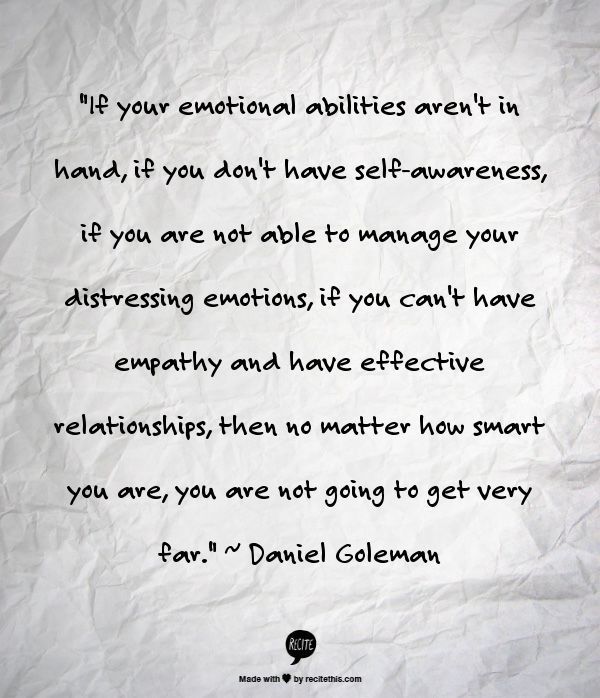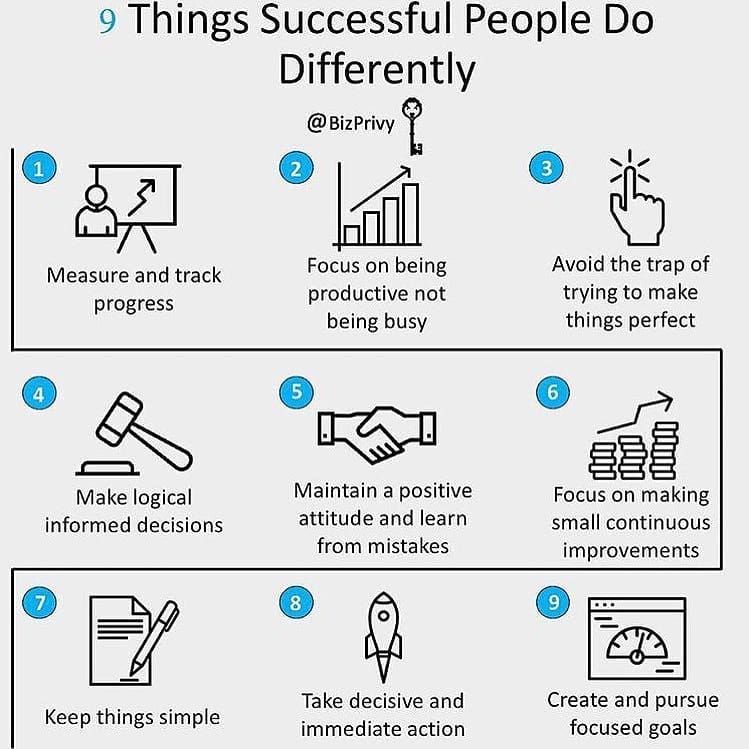Stuck in trauma
Emotionally Stuck at the Age of Trauma: Signs, Causes, and Healing
Some events can keep you emotionally stuck at the age of trauma. But as you begin to heal, it’s possible to get “unstuck.”
As you grow up, it’s common to use child-like coping methods to get your needs met. Temper tantrums, uncontrollable tears, and impulsive behaviors are all expected. As you get older, it’s typical to “outgrow” these behaviors, replacing them with more emotionally mature responses.
But experiencing trauma at an early age can disrupt your emotional growth. You might not outgrow child-like actions — instead, they may remain as coping methods, causing problems in your relationships, work-life, and even your sense of self.
With proper treatment and support, you can begin to understand the reasons behind your emotional responses and behaviors and move toward healing.
Traumatic events can overwhelm your body and mind, leaving a lasting mark on your mood, relationship, and sense of self long after the trauma has ended.
When trauma impairs your ability to develop full emotional maturity, this is known as arrested psychological development. Trauma can “freeze” your emotional response at the age you experienced it.
When you feel or act emotionally younger than your actual age, this is known as age regression.
Age regression means that, later in life, child-like behavior patterns can appear again when we feel unsafe or when we encounter triggers related to previous trauma — even if we’re unaware that we’ve been triggered.
“When an individual is traumatized, especially early on in life, the memory of the trauma is stored both in the brain and the body,” explains Carla Marie Manly, PhD, a clinical psychologist, trauma specialist, and author based in Sonoma, California. “As a result, if healing does not occur, the traumatic incident can impede healthy development.
“In essence, depending on the severity of the trauma, [your] entire way of being may be formed around the traumatic incident,” Manly adds.
This is because, on a neurobiological level, the trauma is not properly processed. It can rewire your brain in such a way that ultimately influences your thought patterns and behavioral responses as you get older, she says.
According to 2015 research, age regression can happen in children and adults. A small-scale 2007 study notes that regression may be more common in younger adults than older adults.
Though many therapists and counselors believe that trauma can cause age regression and leave people stuck at a certain age, few research studies are looking into its validity and usefulness in trauma therapy.
When does trauma-related regression happen?
Trauma that affects your development can occur at any time during childhood. Examples of early life traumas include:
- abuse
- neglect
- accidents
- bullying
Melissa Lapides, a licensed marriage and family therapist, psychotherapist, and trauma specialist in California, explains age regression as a survival mechanism. “Because it wasn’t safe for the body to process [at the time], the trapped emotions unconsciously dictate your behaviors and relationships unknowingly,” she says.
“Because it wasn’t safe for the body to process [at the time], the trapped emotions unconsciously dictate your behaviors and relationships unknowingly,” she says.
“It doesn’t necessarily make you stuck at a certain age, but instead, [you are] acting out the emotional wounding that happened at that age,” Lapides adds.
Trauma can cause anyone to get “stuck” in this way. It might occur in people with mental health issues related to trauma, such as:
- post-traumatic stress disorder (PTSD)
- dissociative identity disorder
- borderline personality disorder
- depression
The signs or symptoms that someone is emotionally stuck vary from person to person and can depend on how old you were when the trauma occurred and the nature of the trauma.
Behaviors associated with age regression could include adult temper tantrums, difficulty with impulse control, or overly clingy or dependent behavior.
Behaviors classed as regressive can also involve child-like comfort-seeking, such as:
- rocking
- pacing
- thumb-sucking
- needing a comfort toy
Still, these are not necessarily negative coping methods, and they can help many people feel comforted, safe, and loved.
Some general signs of unresolved trauma could include:
- fear-based behaviors, such as excessive anxiety or controlling behavior
- a tendency to shut down or dissociate
- people pleasing behavior
- knowing you want to do something in life, but feel like you can’t get there
- feeling easily emotionally overwhelmed
- difficulty maintaining close relationships
- unstable interpersonal relationships
What does trauma-associated age regression look like?
Examples include:
- Revisiting a childhood home, or visiting your parents, may activate child-like behaviors that were present at the age of trauma experienced when growing up.
- Children facing stressful situations, like major life changes, may start bed-wetting or thumb-sucking when they had previously outgrown those behaviors.
- Adults may respond to conflict by avoiding mature conversation topics that are complicated or stressful, even when it impacts their relationships.

“Most people understand [trauma] as tragic, violent, or catastrophic incidents, like combat trauma or natural disasters,” says Claire Corey, PhD, a clinical psychologist and trauma specialist. She adds that trauma can come from events that weren’t registered as significant at the time, but they left a mark, nonetheless.
As well as one-off events, trauma can result from repeated events, like an abusive relationship or childhood neglect. Complex trauma — the kind that arises from repeated events — often stems from childhood experiences.
Every person’s response to trauma is unique — so an event that might cause one person to regress or get “stuck” might not impact someone else in the same way, even if they lived through similar experiences.
“You can have 10 people survive a small plane crash, and each person’s response to the traumatic event will be different based upon their history, genetics, and their actual experience of the traumatic event,” Manly explains.
In other words, “trauma isn’t an event that happens. It’s how you process the event,” Lapides says. If you receive support or help while going through a traumatic event, the trauma is less likely to stick with you.
Some common causes of unresolved trauma Manly and Lapides have worked within clients include:
- abuse or neglect in childhood
- emotionally unavailable parents or caregivers
- bullying at school
- molestation or sexual assault
- auto accidents
- surviving natural disasters
- abusive work situations
- emotionally abusive relationships
With proper help from a licensed therapist, many people can integrate their traumatic experiences and become “unstuck.”
Becoming unstuck will mean different things to different people. For many, it may mean developing more mature emotional responses and relying less on unhelpful, child-like coping methods.
For example, if your trauma has resulted in adult temper tantrums to cope with conflict, becoming unstuck could mean you’re able to turn to more adaptive methods, such as:
- deep breathing
- self-compassion
- conflict resolution strategies
“I worked with many people who have healed from their trauma to remarkable degrees,” Manly says.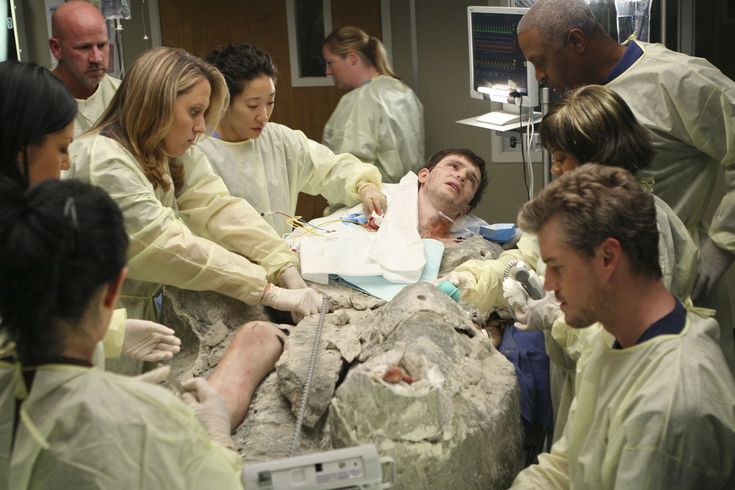 “From veterans who go on to marry and enjoy connected, healthy relationships to victims of horrific childhood abuse, I have been fortunate to witness the progress of so many individuals who worked hard to become unstuck.”
“From veterans who go on to marry and enjoy connected, healthy relationships to victims of horrific childhood abuse, I have been fortunate to witness the progress of so many individuals who worked hard to become unstuck.”
According to the American Psychological Association (APA), specific therapies that can be especially effective for helping you heal from trauma, including:
- cognitive processing therapy (CPT)
- prolonged exposure (PE) therapy
- cognitive behavioral therapy (CBT)
- Eye Movement Desensitization and Reprocessing (EMDR) therapy
- narrative exposure therapy
- somatic therapies
- mindfulness-based therapies
If you think you’re emotionally stuck in your trauma, you might find relief by talking with a therapist or other mental health professional. You can find a therapist online or by using our Find a Therapist resource page.
Other helpful trauma resources include:
- The Substance Abuse and Mental Health (SAMHSA) National Helpline at 1-800-662-4357
- The National Child Traumatic Stress Network
Emotionally Stuck at the Age of Trauma: Signs, Causes, and Healing
Some events can keep you emotionally stuck at the age of trauma. But as you begin to heal, it’s possible to get “unstuck.”
But as you begin to heal, it’s possible to get “unstuck.”
As you grow up, it’s common to use child-like coping methods to get your needs met. Temper tantrums, uncontrollable tears, and impulsive behaviors are all expected. As you get older, it’s typical to “outgrow” these behaviors, replacing them with more emotionally mature responses.
But experiencing trauma at an early age can disrupt your emotional growth. You might not outgrow child-like actions — instead, they may remain as coping methods, causing problems in your relationships, work-life, and even your sense of self.
With proper treatment and support, you can begin to understand the reasons behind your emotional responses and behaviors and move toward healing.
Traumatic events can overwhelm your body and mind, leaving a lasting mark on your mood, relationship, and sense of self long after the trauma has ended.
When trauma impairs your ability to develop full emotional maturity, this is known as arrested psychological development. Trauma can “freeze” your emotional response at the age you experienced it.
Trauma can “freeze” your emotional response at the age you experienced it.
When you feel or act emotionally younger than your actual age, this is known as age regression.
Age regression means that, later in life, child-like behavior patterns can appear again when we feel unsafe or when we encounter triggers related to previous trauma — even if we’re unaware that we’ve been triggered.
“When an individual is traumatized, especially early on in life, the memory of the trauma is stored both in the brain and the body,” explains Carla Marie Manly, PhD, a clinical psychologist, trauma specialist, and author based in Sonoma, California. “As a result, if healing does not occur, the traumatic incident can impede healthy development.
“In essence, depending on the severity of the trauma, [your] entire way of being may be formed around the traumatic incident,” Manly adds.
This is because, on a neurobiological level, the trauma is not properly processed. It can rewire your brain in such a way that ultimately influences your thought patterns and behavioral responses as you get older, she says.
According to 2015 research, age regression can happen in children and adults. A small-scale 2007 study notes that regression may be more common in younger adults than older adults.
Though many therapists and counselors believe that trauma can cause age regression and leave people stuck at a certain age, few research studies are looking into its validity and usefulness in trauma therapy.
When does trauma-related regression happen?
Trauma that affects your development can occur at any time during childhood. Examples of early life traumas include:
- abuse
- neglect
- accidents
- bullying
Melissa Lapides, a licensed marriage and family therapist, psychotherapist, and trauma specialist in California, explains age regression as a survival mechanism. “Because it wasn’t safe for the body to process [at the time], the trapped emotions unconsciously dictate your behaviors and relationships unknowingly,” she says.
“It doesn’t necessarily make you stuck at a certain age, but instead, [you are] acting out the emotional wounding that happened at that age,” Lapides adds.
Trauma can cause anyone to get “stuck” in this way. It might occur in people with mental health issues related to trauma, such as:
- post-traumatic stress disorder (PTSD)
- dissociative identity disorder
- borderline personality disorder
- depression
The signs or symptoms that someone is emotionally stuck vary from person to person and can depend on how old you were when the trauma occurred and the nature of the trauma.
Behaviors associated with age regression could include adult temper tantrums, difficulty with impulse control, or overly clingy or dependent behavior.
Behaviors classed as regressive can also involve child-like comfort-seeking, such as:
- rocking
- pacing
- thumb-sucking
- needing a comfort toy
Still, these are not necessarily negative coping methods, and they can help many people feel comforted, safe, and loved.
Some general signs of unresolved trauma could include:
- fear-based behaviors, such as excessive anxiety or controlling behavior
- a tendency to shut down or dissociate
- people pleasing behavior
- knowing you want to do something in life, but feel like you can’t get there
- feeling easily emotionally overwhelmed
- difficulty maintaining close relationships
- unstable interpersonal relationships
What does trauma-associated age regression look like?
Examples include:
- Revisiting a childhood home, or visiting your parents, may activate child-like behaviors that were present at the age of trauma experienced when growing up.

- Children facing stressful situations, like major life changes, may start bed-wetting or thumb-sucking when they had previously outgrown those behaviors.
- Adults may respond to conflict by avoiding mature conversation topics that are complicated or stressful, even when it impacts their relationships.
“Most people understand [trauma] as tragic, violent, or catastrophic incidents, like combat trauma or natural disasters,” says Claire Corey, PhD, a clinical psychologist and trauma specialist. She adds that trauma can come from events that weren’t registered as significant at the time, but they left a mark, nonetheless.
As well as one-off events, trauma can result from repeated events, like an abusive relationship or childhood neglect. Complex trauma — the kind that arises from repeated events — often stems from childhood experiences.
Every person’s response to trauma is unique — so an event that might cause one person to regress or get “stuck” might not impact someone else in the same way, even if they lived through similar experiences.
“You can have 10 people survive a small plane crash, and each person’s response to the traumatic event will be different based upon their history, genetics, and their actual experience of the traumatic event,” Manly explains.
In other words, “trauma isn’t an event that happens. It’s how you process the event,” Lapides says. If you receive support or help while going through a traumatic event, the trauma is less likely to stick with you.
Some common causes of unresolved trauma Manly and Lapides have worked within clients include:
- abuse or neglect in childhood
- emotionally unavailable parents or caregivers
- bullying at school
- molestation or sexual assault
- auto accidents
- surviving natural disasters
- abusive work situations
- emotionally abusive relationships
With proper help from a licensed therapist, many people can integrate their traumatic experiences and become “unstuck.”
Becoming unstuck will mean different things to different people. For many, it may mean developing more mature emotional responses and relying less on unhelpful, child-like coping methods.
For many, it may mean developing more mature emotional responses and relying less on unhelpful, child-like coping methods.
For example, if your trauma has resulted in adult temper tantrums to cope with conflict, becoming unstuck could mean you’re able to turn to more adaptive methods, such as:
- deep breathing
- self-compassion
- conflict resolution strategies
“I worked with many people who have healed from their trauma to remarkable degrees,” Manly says. “From veterans who go on to marry and enjoy connected, healthy relationships to victims of horrific childhood abuse, I have been fortunate to witness the progress of so many individuals who worked hard to become unstuck.”
According to the American Psychological Association (APA), specific therapies that can be especially effective for helping you heal from trauma, including:
- cognitive processing therapy (CPT)
- prolonged exposure (PE) therapy
- cognitive behavioral therapy (CBT)
- Eye Movement Desensitization and Reprocessing (EMDR) therapy
- narrative exposure therapy
- somatic therapies
- mindfulness-based therapies
If you think you’re emotionally stuck in your trauma, you might find relief by talking with a therapist or other mental health professional.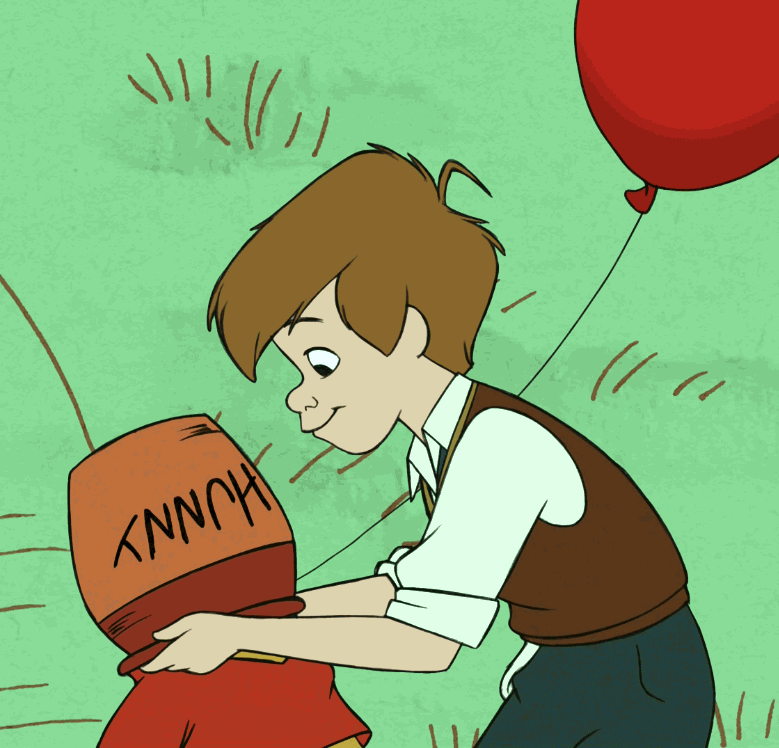 You can find a therapist online or by using our Find a Therapist resource page.
You can find a therapist online or by using our Find a Therapist resource page.
Other helpful trauma resources include:
- The Substance Abuse and Mental Health (SAMHSA) National Helpline at 1-800-662-4357
- The National Child Traumatic Stress Network
Injury. On the practice of working with loss // Psychological newspaper
From the collection of E. Petrova “Trauma. Materials for the author's seminar on working with the consequences of shock trauma and emergency situations, nominee of the Golden Psyche NC according to the results of 2018:
« Each meeting carries parting,
every parting carries the promise of a new meeting. Eastern wisdom
Imagine an atmosphere in which a group of psychologists discuss the topic of change, loss, loss, and mourning. Evening in a boarding house in the mountains, on the Ossetian Military Highway. Two days before, it was raining, and then there was a mudflow, and in the morning we walked with curiosity to watch how a stormy yellow mudflow flowed on the site of a beautiful turn of the highway over a transparent mountain river. And mining equipment is working on the slope in order to restore the road. What seemed to be controllable, predictable and unshakable collapsed. And we could only be witnesses, but we could not change anything. Storms and mudflows passed through the North Caucasus, bridges swept away, quiet rivers turned into formidable streams, there were human casualties. And then everything went quiet. And it was possible to draw conclusions. Somehow it immediately became obvious that there are forces of the natural elements that are more powerful and significant than human capabilities. And these forces destroy what we are accustomed to or what is dear to us. This environment created additional shades for the conversation. And I would like to share some thoughts.
And mining equipment is working on the slope in order to restore the road. What seemed to be controllable, predictable and unshakable collapsed. And we could only be witnesses, but we could not change anything. Storms and mudflows passed through the North Caucasus, bridges swept away, quiet rivers turned into formidable streams, there were human casualties. And then everything went quiet. And it was possible to draw conclusions. Somehow it immediately became obvious that there are forces of the natural elements that are more powerful and significant than human capabilities. And these forces destroy what we are accustomed to or what is dear to us. This environment created additional shades for the conversation. And I would like to share some thoughts.
Function and place of "work of grief" in case of loss
First, it is worth talking about the fact that losses are different. From time to time during our life we lose something, coming to this episode in different ways. We voluntarily give up the important for the sake of new perspectives, or under the influence of inevitable circumstances, we are forced to face change. Will it be a separation from friends from the school class, a change of residence, the death of someone we love, a divorce, loss of a job, etc. and after that, you will inevitably have to start a new life. Because the former, in the forms in which it was, is no longer realistic, impossible. And this is not in the area of our personal capabilities, preferences or rejections, but in the area of the real space-time structure of the world.
We voluntarily give up the important for the sake of new perspectives, or under the influence of inevitable circumstances, we are forced to face change. Will it be a separation from friends from the school class, a change of residence, the death of someone we love, a divorce, loss of a job, etc. and after that, you will inevitably have to start a new life. Because the former, in the forms in which it was, is no longer realistic, impossible. And this is not in the area of our personal capabilities, preferences or rejections, but in the area of the real space-time structure of the world.
The task of a person who has reached such a point in moving through his life is to return to connection with reality. Settle in this reality. Live the change. This task is clear to an external observer. Although the person himself can hardly think at such a moment in terms of "tasks". And in order to “make the transition,” a person is supposed to go through a process that psychologists call “the work of mourning.![]() ” And experience, in greater or lesser intensity, the affect of grief.
” And experience, in greater or lesser intensity, the affect of grief.
Affect of grief . A feeling that everyone would like to avoid in their own life. Which hurts us so much when a loved one experiences it, we even tell him “do not worry, everything will pass!”, in order to console and distract from unpleasant feelings. The most important or only innate adaptive mechanism that functions as a "facilitator of transition". The importance and uniqueness of this explosion of affect (grief, or sadness - if we are talking about a lighter form of experience) is that at the moment of experiencing this affect, all the old connections of associative chains are destroyed (and perhaps, if we take a neurophysiological perspective, the paths blazed in past experience connections in a neural network). And this process, like a flood in spring, washes away the old, unrealistic, related to the past, and creates a basis for the formation of new relationships based on reality. In these connections, what is valuable that should be taken into the future will stand and will be further included in new configurations of relations. What has gone into the past without the possibility of return will return to us in the form of memory as a value and spiritual support.
In these connections, what is valuable that should be taken into the future will stand and will be further included in new configurations of relations. What has gone into the past without the possibility of return will return to us in the form of memory as a value and spiritual support.
The order of the natural living of feelings, the emotional path that a person will take, is the same for different situations. Therapists seem to be able to help avoid feelings of grief. But it is not in the will of the therapist, as well as of any other person living on earth, to cancel this path if the change has occurred in real object space or time. Even if some phases of this path seem “wrong” to the therapist. Sometimes those who are trying to help are trying to avoid pain, and therefore offer to "devalue", to make insignificant the value of what is lost. And by doing so, they are doing a disservice. Since, recognizing the lost as unimportant, they thereby propose to recognize the entire stages of life and feelings experienced by a person as “unimportant”.
How can a therapist help? In order to help a person go through all the stages that naturally follow one after another. Because in our situation of experiences, rather, the problem is that a person cannot “start”, allow himself to experience grief. He is held back by unfinished business. And the person remains in a suspended, semi-realistic position, in torment and anxiety. Not allowing yourself to respectfully recognize the past as a value and thus turn to the experience of the past. And not allowing yourself to move forward along the path of life to the future.
The therapist cannot, by his actions, speed up the transition process or give the command "get into the transition process faster." But the therapist can be a witness, be present as a person goes his own way through the crisis, from the first situation (gone in the past) to the current situation. Create the conditions for such a movement. And to help move in those cases, if the timidity of the soul, or false hope, or the fear of public condemnation stop a person on his way to parting, sadness and rebirth. And close the way to the healing of the soul.
And close the way to the healing of the soul.
So what are losses? You can lose (lose) due to negligence or an accident a wallet with money in public transport. You can lose faith in the bright future of mankind. You can lose the status of a student at the moment when in the 10th grade you leave school forever, having finally received a certificate. You can lose your homeland (the Soviet Union), former friends, lose an enemy or friend if they change their personal orientation, lose the opportunity to contact a person who left to live in Australia forever and did not leave an address, lose the familiar landscape in the place where you like to relax , to lose a person who ended his life and went "to a better world", to lose his youth and much more ... there is no point in listing the losses. The meaning of every parting, every loss, in a general sense, is the same. A person finds himself in a situation that is sharply different from the previous situation, familiar to him. His picture of the world is destroyed. It doesn’t matter if he does this destruction of his own free will (like a son who finally leaves home into adulthood) or if the destruction is brought in from outside. In any case, this is the destruction of the old picture.
It doesn’t matter if he does this destruction of his own free will (like a son who finally leaves home into adulthood) or if the destruction is brought in from outside. In any case, this is the destruction of the old picture.
What can we expect at the end of the cycle? This is also quite clear. This is a complete, full-fledged new picture of the world , in which a person has an understanding of his place, his physical "I", his feelings, in which he is oriented and has plans for the future and attitude to the past. In this picture, his SELF is active, the functions of ID, PERSON and EGO are manifested. In between on this path lies a long or short stretch of crisis experience, which includes the completion of the destruction of the old picture, the experience of aggression and disorientation, and then the experience of creating a new world. A new world is formed in contact with reality, a new picture of the world integrates as resources important components for a person from the old life (in the form of values, memories, skills, respectful memory).
A person can get stuck at different stages of this process. In this situation, for many days and years, the human soul will be in the grip of endlessly reproducing feelings. The work of mourning stops. And the process of creative adaptation is interrupted. Grief is a universal experience for all people; and the task of the therapist is to diagnose such a stop. To understand the reason and plot of the unfinished process important for the personality that keeps a person. To give space in order to create an experiment with the "completion of an unfinished situation" within the framework of the therapist's office. Find support resources. And to support a person in facing the experience of grief and the experience of loss and to go through this process more courageously in a conscious state.
Algorithm to live on the loss of
Negation . First, disbelief that the picture of the world has changed, that there is a loss in it. Denial up to the formation of psychotic states. The person seems to be telling the world: “I don’t believe that you have changed, I don’t have the strength to face this fact”, an attempt to build a life according to old principles, “as if he were with me.” Diagnostically, this means that a person does not have enough resources to survive the separation and organize life anew at the mental level. He is afraid to take a risk - to admit that his system of connections and organization of life is destroyed, and that he must take a risk and accept a new reality. He hopes for a "miraculous restoration" of his former life, and sees little prospect of building a new life in the future, abandoning the old one.
The person seems to be telling the world: “I don’t believe that you have changed, I don’t have the strength to face this fact”, an attempt to build a life according to old principles, “as if he were with me.” Diagnostically, this means that a person does not have enough resources to survive the separation and organize life anew at the mental level. He is afraid to take a risk - to admit that his system of connections and organization of life is destroyed, and that he must take a risk and accept a new reality. He hopes for a "miraculous restoration" of his former life, and sees little prospect of building a new life in the future, abandoning the old one.
Resentment . The experience of an unbearable feeling of the destruction of one's own world and the external world, the experience of a catastrophe and, at the same time, a protest against this destruction. Diagnostically, this stage indicates that a person has found resources and noticed reality, and his soul begins to rush between the past and the future in search of support. This feeling must be expressed outside, heard in the world, in order for the psyche to be able to move on to the next stage of the crisis path. According to the plot, in a conversation with a person, we do not know in advance where it will be projected - on the deceased, on ourselves or on the world, on doctors, on friends ... - this cannot be said in advance. Resentment as an experience symbolizes the fact that a person began to emerge from the merger, and anxiety increased. This is a reaction to a merger break.
This feeling must be expressed outside, heard in the world, in order for the psyche to be able to move on to the next stage of the crisis path. According to the plot, in a conversation with a person, we do not know in advance where it will be projected - on the deceased, on ourselves or on the world, on doctors, on friends ... - this cannot be said in advance. Resentment as an experience symbolizes the fact that a person began to emerge from the merger, and anxiety increased. This is a reaction to a merger break.
Aggression . It is an outward directed energy, a powerless anger at that (at those) who are "guilty". This aggression diagnostically means that a person has come out of the "fade" during the experience of a catastrophe and expresses feelings towards the structures of the world external to him, however, realizing that these are only projections. Even if it is self-aggression (“oh, I'm a fool!”), we will notice new forms in the activity of the body, the muscles are mobilized for a fight, anger breaks out.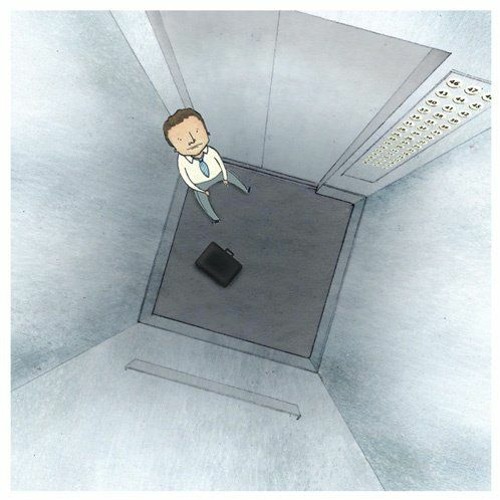 The exit from the merger has already taken place. The mental function of anger is the last attempt by the power of anger to return the lost components of the world. The completion of the stage is that the forces of anger are exhausted and depleted. A person remains alone for a certain period of time. Despair, explosions of grief, which are replaced by sadness, peace. A person goes through contact with emptiness, recognizing his helplessness, impotence to change something. Sadness and bright emptiness is an emotional expression of the final parting with the old picture of the world and a return to the original sources of oneself. Another person may be nearby, his presence is important, but his intervention in the process would be inappropriate.
The exit from the merger has already taken place. The mental function of anger is the last attempt by the power of anger to return the lost components of the world. The completion of the stage is that the forces of anger are exhausted and depleted. A person remains alone for a certain period of time. Despair, explosions of grief, which are replaced by sadness, peace. A person goes through contact with emptiness, recognizing his helplessness, impotence to change something. Sadness and bright emptiness is an emotional expression of the final parting with the old picture of the world and a return to the original sources of oneself. Another person may be nearby, his presence is important, but his intervention in the process would be inappropriate.
Outreach to the people, building a new picture of the world and a plan for the future . On the ruins of the old world, a new one is being built. All the good that was associated with the departed person remains not as an actual opportunity for activity and the exchange of resources, but as a memory, as an experience of the past and remembrance that can become a resource for a new life. “What is separated from the past, what is valuable, you can take with you in a new role” (“I will keep love and memories in memory.” “I will embody the same ideals in a new way!”, “We will go a different way!”) .
“What is separated from the past, what is valuable, you can take with you in a new role” (“I will keep love and memories in memory.” “I will embody the same ideals in a new way!”, “We will go a different way!”) .
It is important for the therapist to know about himself that he can sincerely skip or forget the phases of this work at the moment if there is an unfinished work of parting (work of grief) in his own soul . Therefore, the presented algorithm can become a hint or a support for the therapist's self-support in working with clients. The person spontaneously experiences these phases by doing the "work of grief". The therapist can help him go through the stages in which the person is "stuck". It is impossible to cancel the stages, but it is worth maintaining a high-quality "projection" at each stage, and after "saturation" - the transition to the next stages. It is impossible to speed up transitions or jump through a stage out of pity. Often the failure to pass the stage is due to the fact that a person does not dare to experience a feeling that is not authorized in this culture. The therapist creates an atmosphere of acceptance and "legalization of negative feelings". Thus, giving the opportunity to "complete pending actions."
The therapist creates an atmosphere of acceptance and "legalization of negative feelings". Thus, giving the opportunity to "complete pending actions."
In the first phase of , a person is often hindered by the assurances of friends and relatives that there is no need to worry so much, everything will work out. Oddly enough, the presence of a person who objectively says - “yes, a really terrible event happened”, “everything collapsed” will help more. (“Everything literally collapsed into the water - and we will no longer be able to walk along the green slope of the mountain, from which we looked at the flowing water of a mountain river yesterday”).
In the second phase , a person may be embarrassed by his anger and resentment, believing that "it's either good or nothing about the departed." He may fear condemnation from society. Or be afraid of the destruction of their own ideas about themselves, because they do not think in themselves the possibility of resentment or aggression towards those they loved. “If I loved him, then there should be no anger in me. If I'm angry, then I didn't love him. And how even then to be. Who am I?".
“If I loved him, then there should be no anger in me. If I'm angry, then I didn't love him. And how even then to be. Who am I?".
Such an observable (temporary) regression to primitive childish logical constructions seems absurd, but it must be remembered that under the influence of trauma, a person often returns temporarily to infantile forms of behavior.
In the fourth phase , a person may meet with the fact that close people will not give him space to experience grief and to be sad. It will seem to them that the subject is withdrawing too much from contact. Separates too much. That it would be better for a person who has experienced a loss to "be in public." It must be admitted that the "work of grief" requires its own time and its own physical space.
At the final phase a person can be stopped by the prejudice that renouncing the memory of a person, letting him go is “betrayal”. Moreover, building plans for a new life can also be the subject of condemnation from others.
Some Therapeutic Tactics for Dealing with Loss and Grief
The work of grief is a complex process. This work includes love, resentment, heartache, anger, frustration, fear, confusion, confusion, hope, and loneliness. Walking the path of grief and separation, when that path is completed, is full of existential meaning and therapeutic. When the pain that moved a person goes away in the process of work and a person looks for resources for recovery, he gets a unique experience. Experience of entering into a crisis, staying in a crisis, overcoming a crisis and renewal. The presence of unexpressed feelings, whether it be love, aggression or resentment, prevents the true existence of a person "here and now." Therefore, the process of living is very important. One way to achieve this is when the person in the fantasy/dialogue expresses their feelings for the one who left.
The therapist's first step in the practice of grief work is often to concern the client with his "suspense" - usually it is clearly visible in what and how the client says, in his bodily movements, or in various identifications with the departed person. Often, a deceased person is spoken of in the present tense, as if internal conversations with him were continuing. As if he were literally bodily present "in the body" of the person who can't begin to do the work of grief.
Often, a deceased person is spoken of in the present tense, as if internal conversations with him were continuing. As if he were literally bodily present "in the body" of the person who can't begin to do the work of grief.
The second step of is to use the "hot chair" technique on which the deceased "sits". A person can be asked to imagine the deceased in the form, in the way that he remembers him at the best moments of their relationship. In order to make it easier for a person to meet feelings, to revive his experience in relation to the departed, you can literally use a photograph or memorabilia placed on a pillow opposite. It is worth asking the client to express in a monologue addressed to the deceased, what he experiences when he imagines the deceased. The person must be encouraged to express feelings towards the deceased as expressively as possible, "as if he could fantastically hear you now!". It is worth keeping in this conversation a message about grievances and gratitude, anger and tenderness, claims and moral obligations. Sometimes in this experiment it is worth asking the client to imagine and tell about what feelings, as it seems to him, the person to whom these words are addressed could experience. And even offer to “pretend” to answer on behalf of the deceased, “how could he say?”. During this dialogue, the therapist encourages bodily (physical) movements, for example, touching a pillow (deceased), an empty chair, making an expressive gesture-message, etc.
Sometimes in this experiment it is worth asking the client to imagine and tell about what feelings, as it seems to him, the person to whom these words are addressed could experience. And even offer to “pretend” to answer on behalf of the deceased, “how could he say?”. During this dialogue, the therapist encourages bodily (physical) movements, for example, touching a pillow (deceased), an empty chair, making an expressive gesture-message, etc.
At the transition to the phase of completing the relationship and building new life plans, it is worth paying a person's attention to reality. Often clients try to “throw everything away” and they can literally be told that there is something good that they can really take with them into a new life. "Breaking up with someone doesn't mean you have to forget about them." In order to support this topic, you can ask the client the following questions: “What do you want to take with you from this person and what do you want to leave in the past, bury?”, “What part of the relationship do you want to take with you and what do you want to leave ?”, “What are your favorite memories of this person?”. When the person seems to have completed the message, the therapist asks if they feel ready to say goodbye. This is the responsibility of the client. If the person is ready to say goodbye, encourage them to do so literally in the form of a physical game in space. Up to the point that you can take the pillow to the next room and say (verbalize) "goodbye" or some other similar expression.
When the person seems to have completed the message, the therapist asks if they feel ready to say goodbye. This is the responsibility of the client. If the person is ready to say goodbye, encourage them to do so literally in the form of a physical game in space. Up to the point that you can take the pillow to the next room and say (verbalize) "goodbye" or some other similar expression.
Strange as it may seem, this sequential, step-by-step approach to grief can be applied to any loss, be it the loss of a person, relationship, pet, job, object, and so on.
Interruption of the natural cycle can be for external and internal reasons. Close people can interfere with the passage of stages. Often they say “do not grieve!”, and a person keeps himself from affect for the sake of loved ones and their peace of mind, and thus leaves himself alone. Or internal causes in a person's soul can cause such a "stuck". It can be, for example, an introject (“only a bad person gets angry”). Therefore, the therapist's job is to support the subject through the stages in their "natural" sequence, to accompany the client in his mental work.
Therefore, the therapist's job is to support the subject through the stages in their "natural" sequence, to accompany the client in his mental work.
Observations from everyday life, outside the therapist's office
Here is a small example of the natural development of the process of consistent adaptation of a person to a change in the system (field) in which he is located. I watched a scene in which a heavy poplar branch unexpectedly collapsed from a small wind on the roof of a car parked near the house, in front of its owner. The branch shattered the windshield and damaged the roof. The sequence of experiences of the owner of the car was an illustration of how successive experiences of loss are described.
At first, he was dumbfounded walking around the car and, it seems, could not believe what had happened. Then he began to say to the runaway neighbors: “Well, how is it, why exactly was I so unlucky, because I wanted to leave half an hour ago and only accidentally stayed at home!” There was resentment and helplessness in his voice. All this time, he was touching and pulling his hands away from the branch, not yet starting to throw off the pieces of wood from the body of the machine. Then after about three minutes he almost regained his balance and a sign of this was the developing aggressive pattern. He began to swear at the city authorities and began to use obscene language. Here the female part of the audience dispersed, and the men supported him. And against the background of this aggression, he began to drop branches. Then he stopped and became sad. Once again looked at the car and said: "Well, what a pity, because recently painted!". Then he looked around and said to those who helped to drop the branches: “There is no need to remove the branches any further. I'll call the insurance company now. Suddenly, it is important for them to testify to the cause of the damage. They need to pay for everything." So, we see that the motorist spontaneously went through five phases of the process of separation and restoration of integrity.
All this time, he was touching and pulling his hands away from the branch, not yet starting to throw off the pieces of wood from the body of the machine. Then after about three minutes he almost regained his balance and a sign of this was the developing aggressive pattern. He began to swear at the city authorities and began to use obscene language. Here the female part of the audience dispersed, and the men supported him. And against the background of this aggression, he began to drop branches. Then he stopped and became sad. Once again looked at the car and said: "Well, what a pity, because recently painted!". Then he looked around and said to those who helped to drop the branches: “There is no need to remove the branches any further. I'll call the insurance company now. Suddenly, it is important for them to testify to the cause of the damage. They need to pay for everything." So, we see that the motorist spontaneously went through five phases of the process of separation and restoration of integrity. And we see the role and contribution of the environment in the fact that these stages were passed without destruction. The environment, in the form of people present and neighbors, provided support. The neighbors talked and supported the expression of feelings at every stage.
And we see the role and contribution of the environment in the fact that these stages were passed without destruction. The environment, in the form of people present and neighbors, provided support. The neighbors talked and supported the expression of feelings at every stage.
A common example in counseling practice is stories about parting with loved ones. There are often reports that although a man has left a relationship, he retains his place in the soul of a woman or man. The incompleteness of relationships is a phenomenon of forced preservation of the system. A person tries to avoid parting and, due to his emotions, maintains integrity where this integrity no longer exists. “Here you are breaking up, and he seems to have promised nothing and it seems that there is something.” Such real-life examples can provide an illustration similar to those of loss and loss in situations that are traditionally considered stressful.
Burning contact cycle
The work of the therapist in dealing with the experience of loss can be seen from the point of view of the cycle of contact. This is a cycle of work with the experience of grief and loneliness. The first and second phase of the above process, which consists of 5 stages, corresponds to the pre-contact. The experience of resentment and the experience of the event of separation is the separation from the background of the experience of separation and loss. The phase of contacting corresponds to the stage of manifestation of aggression. This activity is directed outward. Note that this is the last phase, when a breakthrough in aggression on the part of a person who is experiencing a situation of loss can be effective. He can restore the system if, in his activity, he catches up and holds on to a past event or a lost element of the system. If the loss of the elements of the system is irreversible, this aggression “forms the boundary of separation”, and the energy dissipates in space, separating the subject from the past. The figure the subject contacts with becomes an expression of grief.
This is a cycle of work with the experience of grief and loneliness. The first and second phase of the above process, which consists of 5 stages, corresponds to the pre-contact. The experience of resentment and the experience of the event of separation is the separation from the background of the experience of separation and loss. The phase of contacting corresponds to the stage of manifestation of aggression. This activity is directed outward. Note that this is the last phase, when a breakthrough in aggression on the part of a person who is experiencing a situation of loss can be effective. He can restore the system if, in his activity, he catches up and holds on to a past event or a lost element of the system. If the loss of the elements of the system is irreversible, this aggression “forms the boundary of separation”, and the energy dissipates in space, separating the subject from the past. The figure the subject contacts with becomes an expression of grief.
In a situation of loss, this phase ends with the subject at stage 4 encountering the experience of grief and coming into contact with it. And the completion of this event will be from the point of view of the integration phase along the contact cycle. This is contact with the experience of loneliness, sadness and loss. At this stage, the memory of the events of the past will be included in the volume of integration.
And the completion of this event will be from the point of view of the integration phase along the contact cycle. This is contact with the experience of loneliness, sadness and loss. At this stage, the memory of the events of the past will be included in the volume of integration.
Loss of Systems Theory Perspective
The same stages can be considered from the point of view of systems theory. Before the episode of loss, we have a situation of various kinds of conflicts in the system. By themselves, conflicts lead to the restructuring of the system, but do not destroy the boundaries of the system. Leaving the boundaries of the element system creates a fundamentally new situation, which is classified as a crisis situation. And then we are forced to consider the stages of the passage of the crisis. For some time, the system tries to ignore the fact that part of its resources and structure is irretrievably lost. And at the first stage (denial) behaves as if her "protest", her efforts could return everything to its place.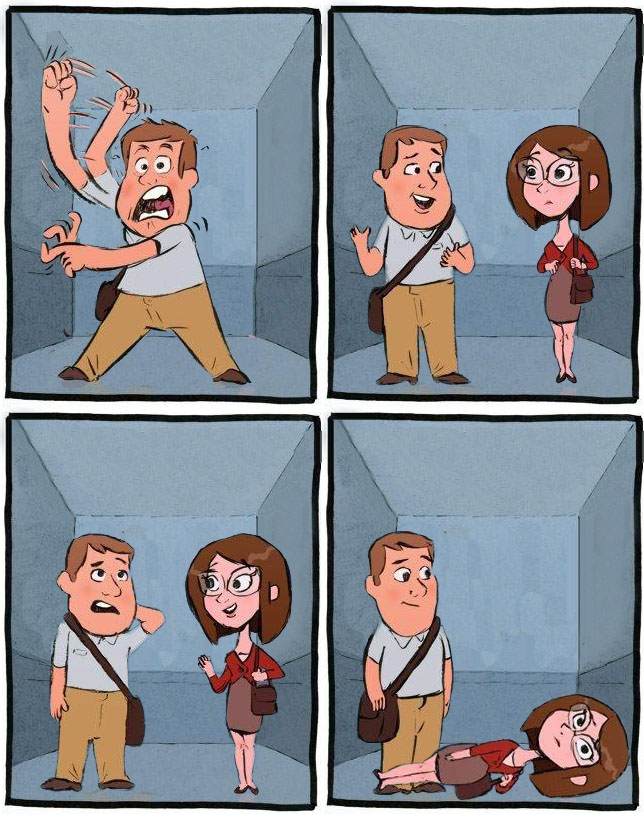 As an emotional illustration, we can give an example about the well-known Kirlian effect. The effect is that a living organism glows in ultraviolet rays. So, when a part of a violet leaf is removed, for some time the glow picture remains as if the leaf were intact, and only a gradually cut piece of the leaf becomes visible at the luminosity level. The sheet seems to “remember” its original form, denying the loss. In the resentment phase, we will notice that the system has begun to recognize that some of what used to be "part of it" has moved aside. And resentment is a phenomenon of fusion break. Something separates, a "jumper" begins to register. At the next stage, the system reacts with a maximum surge of energy in the rupture zone, and this surge itself begins to form a “dynamic border”, emotionally, one can say that the system can only contact the environment through pain.
As an emotional illustration, we can give an example about the well-known Kirlian effect. The effect is that a living organism glows in ultraviolet rays. So, when a part of a violet leaf is removed, for some time the glow picture remains as if the leaf were intact, and only a gradually cut piece of the leaf becomes visible at the luminosity level. The sheet seems to “remember” its original form, denying the loss. In the resentment phase, we will notice that the system has begun to recognize that some of what used to be "part of it" has moved aside. And resentment is a phenomenon of fusion break. Something separates, a "jumper" begins to register. At the next stage, the system reacts with a maximum surge of energy in the rupture zone, and this surge itself begins to form a “dynamic border”, emotionally, one can say that the system can only contact the environment through pain.
At the stage of mourning and sadness, the system gets out of contact with the environment. And the content of the life of the system will be its own experience of emptiness and the experience of the minimum amount of its own identity. At the final stage, the system will begin to reconstruct and take new elements from the external environment. On the mental level, this will be self-identification, turning to the environment, restoring part of the memory of the past and making plans for the future. The system has passed the crisis and entered a new status.
At the final stage, the system will begin to reconstruct and take new elements from the external environment. On the mental level, this will be self-identification, turning to the environment, restoring part of the memory of the past and making plans for the future. The system has passed the crisis and entered a new status.
Conclusion
As a therapist, I am aware that it is the unfinished, stopped work of mourning that often becomes an invisible but significant fragment of the experience in depression. Often a person does not report the loss, but presents only a symptom. This is a symptom in the form of anxiety, developmental arrest, sometimes a somatic symptom, or obsessions of various kinds. Metaphorically, one can say that it is as if such an unfinished process takes some of the resources from actual life and keeps a person in a certain dissociated state. In this state, the activity and spontaneity of the soul in different situations and in different areas of life is limited.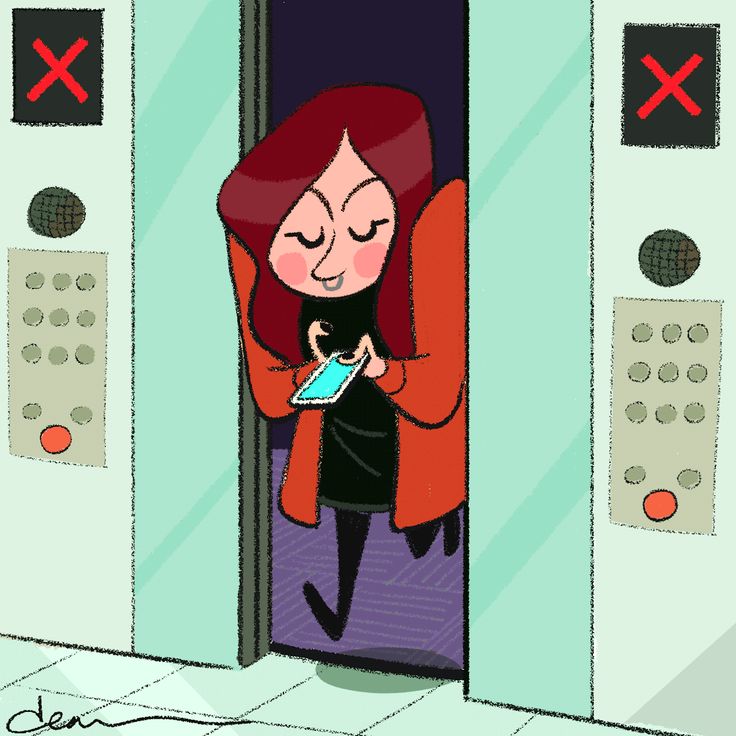 At the same time, there is often no direct connection between the actual plots of life experience, in which there is not enough energy, and the plots of life, in which there was a loss.
At the same time, there is often no direct connection between the actual plots of life experience, in which there is not enough energy, and the plots of life, in which there was a loss.
This distinction between plots is often misleading and interferes with diagnosis. Sometimes the client from himself and from the therapist closes such an episode of his life in order not to meet with pain. And the therapist must be sensitive to this place of shared experience. Find the right form, suitable for the client, to restore contact with the area of stopped feelings, and help complete the temporarily stopped process. Accompanying the work of mourning is an important point in the work of the therapist with depression.
"When the past did not become the past"
Headings : Latest articles, Psi-reviews, Psychology
Did you find something useful here? Help us stay free, independent, and free by making any donation or purchasing some of our literary merchandise.
Whatever psychological problem is, it often relates in one way or another to either internal conflict or trauma. But what is psychological trauma? How is it formed, what does it consist of, and how much does it affect our relationships with others? And finally, why do we unconsciously repeat in our lives and play out traumatic experiences in various forms? Psychologist Anastasia Zverko tells.
"The pattern of grass defines the contours of the "future fires". … “the pattern of trauma determines the pattern of the future.”
Arkady Dragomoshchenko, "Chinese Sun"
Psychological trauma is a complex phenomenon affecting many areas of the human personality (psychological, physical and sexual maturity, memory, libido, childhood, adulthood, affect, reaction, pleasure, pain, violence, frustration, acceptance and rejection, love, fear), and also some philosophical categories, such as, for example, intersubjectivity and temporality, questions of life and finiteness of being.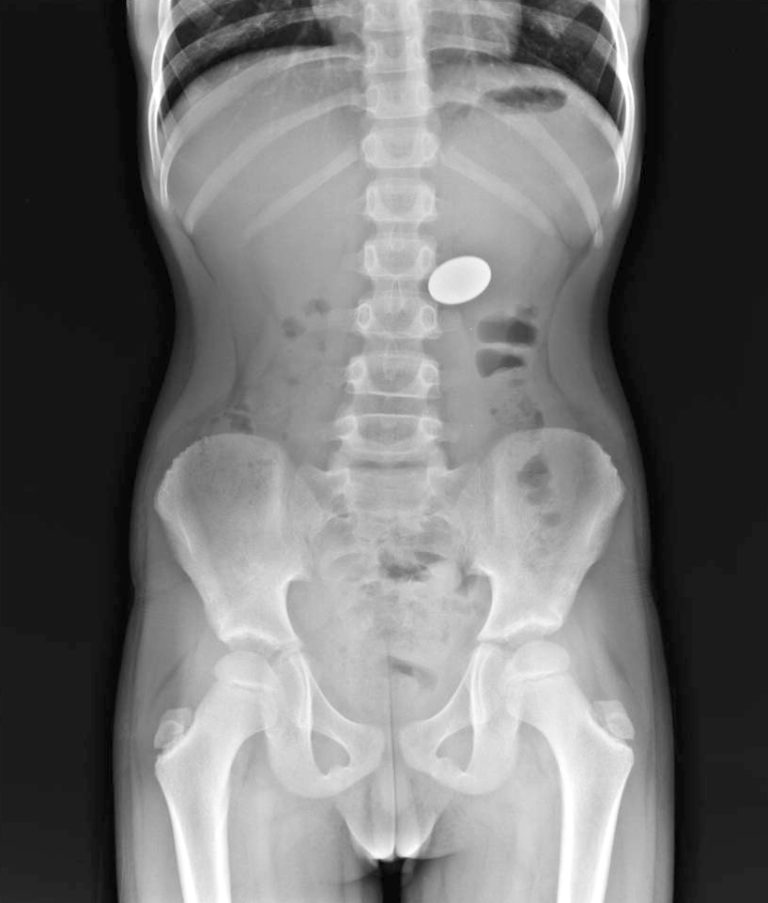
Many definitions of psychotrauma can be found in the literature. One of the most illustrative, understandable and, oddly enough, concise, is the definition of the American psychoanalyst, Robert Stolorow
"Trauma - the experience of an intolerable affect"
This definition will help us get closer to understanding the essence of the phenomenon under study.
Let's turn to its terms, starting with the word "affect" .
Many people are familiar with this term from Russian criminal law (Murder committed in a state of passion - Article 107 of the Criminal Code of the Russian Federation). Not pretending to be lyrical and beautiful, the criminal law defines affect as “a state of sudden strong emotional excitement ...”, which is extremely close to the translation of this word from Latin into Russian:
affectus (lat.) - emotional excitement, passion
In addition, in this sense, the definition coincides with one of the interpretations of the concept in psychology: “Affect is a strong and short manifestation of emotion associated with an unexpected and abrupt change in vital circumstances” ⓘCit.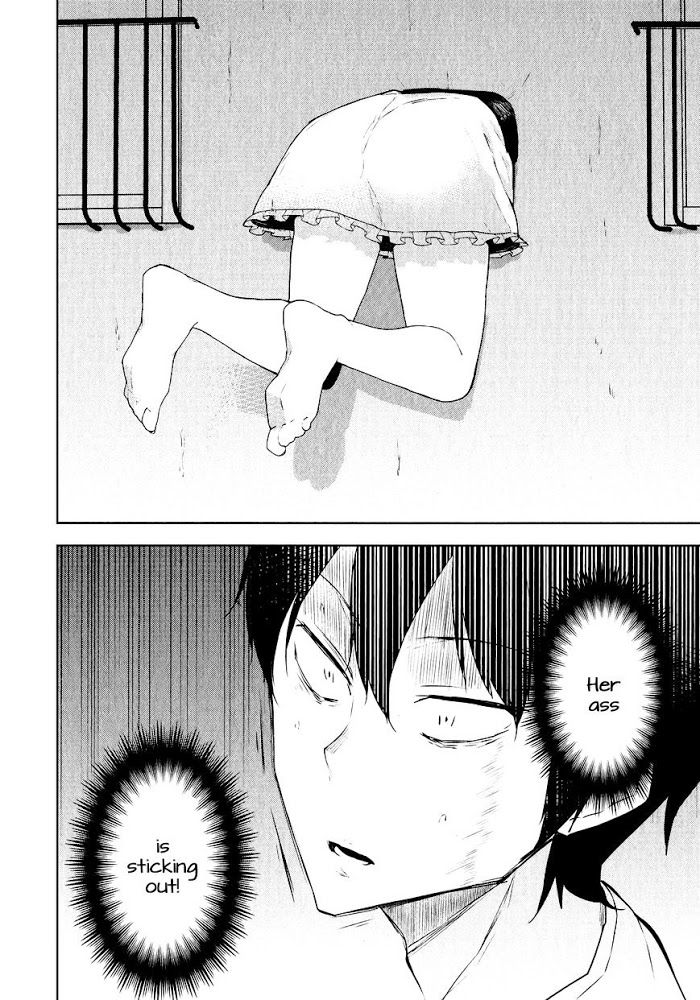 according to Zhmurov V.A. Psychopathology . Part I. Publishing House of Irkutsk University., 1994.
according to Zhmurov V.A. Psychopathology . Part I. Publishing House of Irkutsk University., 1994.
It is important that we are talking not just about a feeling or emotion, but about an emotional process characterized by short duration and high intensity of experiences. However, this is not enough: not every affect becomes the foundation of psychological trauma.
Intolerance is the second term in Robert Stolorow's definition of trauma.
Intolerance - the inability to endure, endure, cope, influence. As if it were a heavy burden or severe pain. The pain is so severe that pain medication is required. The burden is so heavy that one cannot carry it alone.
Intolerance is a reaction, property, quality, consequence of some influence. You can draw an analogy with a physical injury, for example, a fracture. The bone tissue is damaged, it hurts to step on the foot, it is impossible to walk.
Our body, like the psyche, is programmed in such a way that it has the property of self-healing. A broken bone, at the very least, will heal. Also, the psyche will try to heal the consequences of an unbearable affect, but with the help of other tools. Based on this analogy, we can say that an untreated psychotrauma is similar to an improperly healed fracture - ok, perhaps a person will not lose the ability to walk, but will experience pain and discomfort when walking. It is the same in a situation with trauma - the psychological “fracture” will grow together, but will cause pain and inconvenience when a person lives his life.
A broken bone, at the very least, will heal. Also, the psyche will try to heal the consequences of an unbearable affect, but with the help of other tools. Based on this analogy, we can say that an untreated psychotrauma is similar to an improperly healed fracture - ok, perhaps a person will not lose the ability to walk, but will experience pain and discomfort when walking. It is the same in a situation with trauma - the psychological “fracture” will grow together, but will cause pain and inconvenience when a person lives his life.
However, in the above example, an important component remains undisclosed - that which precedes intolerance. You can round it up to the word "event" . An event that generates an intolerable affect.
The American psychoanalyst Donald Kalsched describes intolerance as follows:
"(As a result of some event) A person is bombarded with a volume of impressions that greatly exceeds our ability to consciously experience.
"
We smoothly approached the third term from Stolorow's definition - "experience" .
Here we are talking not about a noun, but about a verb. Experience as a process, since mental processes are characterized by their continuity, continuity. Experiencing, the psyche tries to heal what hurts, to patch up where there is a gap. It is so important for us to understand the experience as a process, since the experience is the essence of the mechanism of psychological trauma, just as there is a mechanism of grief. However, unlike the mechanism of grief, the mechanism of psychological trauma is more bizarre, absurd and uncontrollable. This strangeness can manifest itself in the fact that a person, as if absolutely by chance, without wanting it and without making volitional efforts, involuntarily begins to get into situations that are directly related to his injury.
“I wonder how often a necrophile meets death, a drunkard a bottle, a gambler the cards”ⓘGabriel Wittkop, Necrophile.

Nevertheless, just like the work of mourning, the work of psychotrauma performs the same task - it protects the person and his psyche, helping to cope with the unbearable.
What makes pain an injury?
Not every fragment of the painful human experience mentioned above becomes a psychotrauma.
Robert Stolorow writes that pain becomes trauma due to the lack of an "emotional haven", that is, due to the lack of a specific intersubjective context within which experiences can be retained and integrated.
By emotional shelter, Stolorow means the presence of relationships that make it possible to express these experiences through speech, language, the ability to verbally voice them, to speak, to live through speech, to receive understanding, acceptance, support, help. The term "intersubjective" means the presence of another person (or others), in a situation of psychotrauma - the presence of a special kind, where the injured person will be accepted, heard, where he can receive care and support.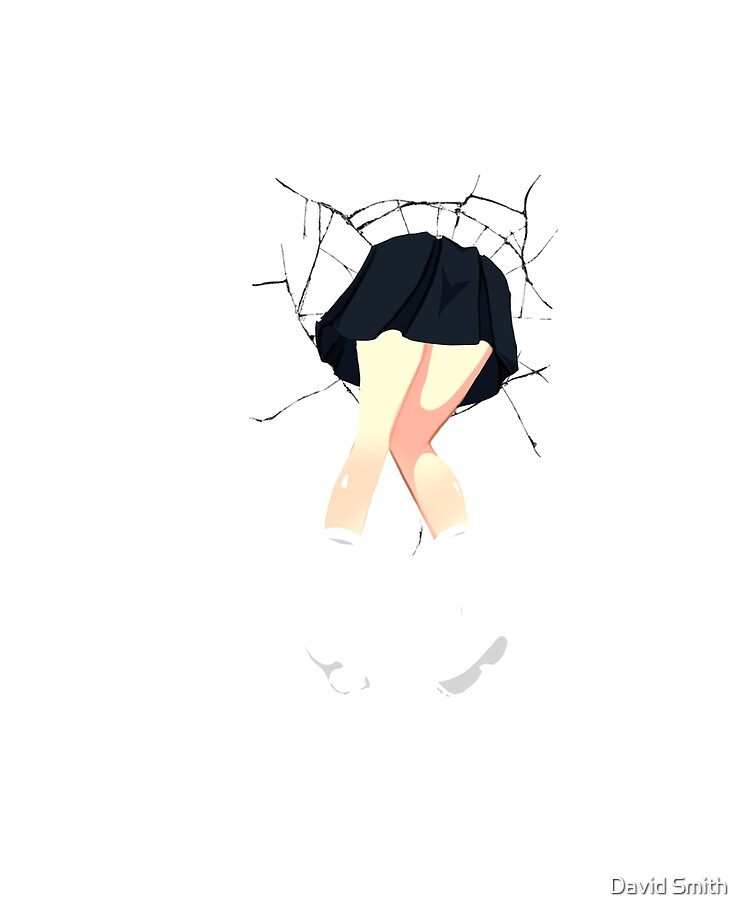
To better understand Stolorow's idea, let's turn to the concept of intersubjectivity, as well as one of the popular theories of personality development.
Let's start with the theory of object relations - this is one of the main psychoanalytic concepts of personality development.
According to this theory, there is a certain core that is formed in the child's psyche depending on the information that he receives (introjects) from the adult raising him.
In a certain sense, this idea coincides with the concept of intersubjectivity of the German philosopher Edmund Husserl, where a person already at the moment of birth gets into relationships with people, and his entire future life cannot be separated from the world of Others. He cannot exist as a “naked” subject, which is clearly seen in the example of the early years of a child’s life: the child cannot take care of himself, in the absence of the intersubjective context necessary to satisfy his vital needs, he simply will not survive, he will die. A person needs the presence of another person.
A person needs the presence of another person.
At a very early age, the child feels, experiences, needs, but does not yet know anything about it. He learns about himself and his needs through feedback from nurturing adults who meet those needs. A child may feel hungry, but not know what it is. He learns about this with the help of his parents who feed him, frustration will be replaced by a sense of satisfaction. Through such seemingly simple things, a person learns to recognize himself, and this becomes possible only if there is feedback congruent (corresponding) to his needs from the world (read - from educating adults).
But the child's needs go far beyond the vital (vital - food and sleep). Nurturing adults also meet his emotional and mental needs. Everyone knows examples when mom or dad start talking to a baby in his childish, almost wordless language - this is a clear example of emotional attunement. This is what the child needs, through which he recognizes himself, gets acquainted with his feelings.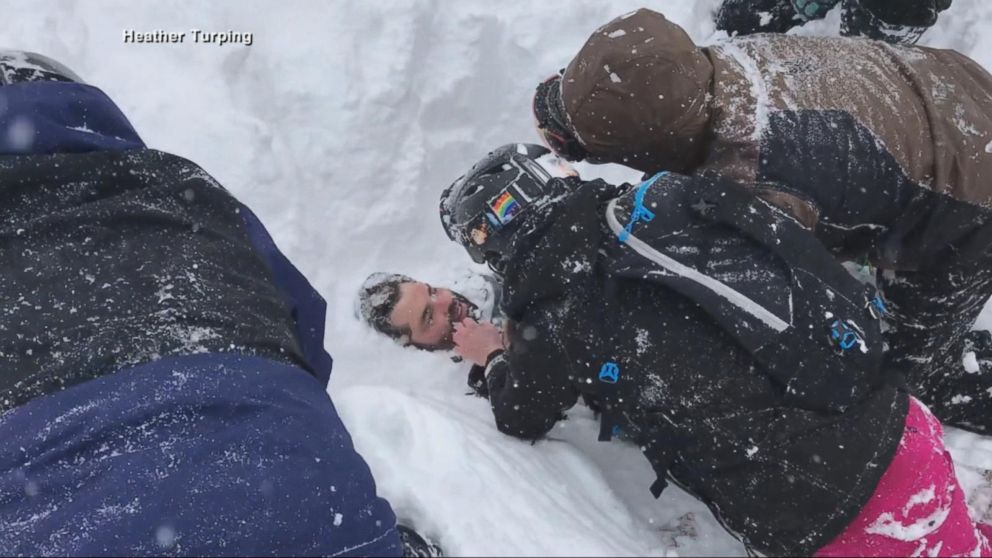 With the help of feelings, the child learns to respond to various stimuli that are inside and outside of him, which becomes the key to his physical and psychological safety.
With the help of feelings, the child learns to respond to various stimuli that are inside and outside of him, which becomes the key to his physical and psychological safety.
The emotional possibilities of a child and an adult are different. What does not pose a psychological danger to an adult may be critically unsafe for a child. To a conventional adult, a child's mental pain may seem insignificant or insignificant in comparison with the pain of adults. But precisely in order for this pain to be lived, and not preserved, it is very important for an adult not to devalue it (“why are you crying, you have not seen life yet, but you are crying as if you are in grief”). It is important that the adult recognizes the truth of the child's experience and shares this experience with the child. This is the main characteristic of the intersubjective context, the emotional haven that Stolorow writes about.
Through this relationship, the child will be able to learn how safe what is happening to him. If the responses of adults are not consonant with the central affective states of the child, and this state of affairs is stable and / or intense, a psychological conflict arises and develops, putting the psychological and physical safety of the child at risk. Stolorow believes that the absence of stable consonant responses to affective states of the child leads to significant deviations from the optimal integration of affects, as well as a tendency to dissociate or deny affective reactions.
If the responses of adults are not consonant with the central affective states of the child, and this state of affairs is stable and / or intense, a psychological conflict arises and develops, putting the psychological and physical safety of the child at risk. Stolorow believes that the absence of stable consonant responses to affective states of the child leads to significant deviations from the optimal integration of affects, as well as a tendency to dissociate or deny affective reactions.
See also "Hatred and Containerization": Patrick Casement on Overcoming Destructiveness
Time and memory
Among others, psychotrauma exists in the plane of time and memory.
How is it that a situation that happened to a person, for example, when he was four years old, continues to be present in his life as if it happened yesterday? How it works?
Memory is the central space in which the mental life of a person unfolds.
The German philosopher Martin Heidegger says that Dasein ⓘThe concept of Dasein introduced by Heideger means “being-in-itself”, “here-being”. "exists", remembering. This means that a person, with all his multimodality and multicontextuality of being, exists - is present in the world in a special way, in which only a person and no one but a person can be present. This is made possible by memory.
Also read/see
— Video lecture: the philosophy of Martin Heidegger in six lectures
- "Something is finally bothering you": Dasein Analysis and the Syrian Mystics
In one of his early works, Freud writes that psychotherapy as such began with the question of memory. In a situation of psychotrauma, our memory remembered the way in which a person reacted to traumatic circumstances, perceived it as such a way by which a person could survive, survive. Instead of a new action, there is an obsessive repetition of what has been lived in various modes. Getting into situations of the traumatic register, a person for some reason begins to act and react in this way, and not otherwise.
Getting into situations of the traumatic register, a person for some reason begins to act and react in this way, and not otherwise.
Considering the phenomenon of psychological trauma from the point of view of temporality, we can say that trauma is the past that has not become the past. She remains to live in a distant or not very time period, interfering with the usual course of time, in the natural course of life. Traumatic experience, with the help of the continuity of mental processes, continually gets into our present and highlights our future, like a searchlight beam.
Sometimes a psychological trauma is called a “split of time”: as a result of a traumatic event, the world, as it were, splits into before and after.
The already mentioned Edmund Husserl, the founder of the phenomenological current of philosophy, studied the category of time for a long time. So, Husserl thinks that the point “now”, the experience of the present always has “thickness”, that is, it always contains both the past and the future. Accordingly, the moment "now" simultaneously preserves the past and anticipates the future. Life experience always exists in all three dimensions of time at once. Heidegger calls our being "the stretch between birth ( past ) and death ( future )". Stolorow believes that trauma is a gap between the unity of time, the stretch between past and future. The experience of trauma is like a freeze frame, a trap of time to which a person is doomed to return through a "portal" opened by the blows of fate. The past becomes the present, and the future, interdependent on such a present, loses all meaning, except for one thing - endless repetition (remember the freeze frame).
Accordingly, the moment "now" simultaneously preserves the past and anticipates the future. Life experience always exists in all three dimensions of time at once. Heidegger calls our being "the stretch between birth ( past ) and death ( future )". Stolorow believes that trauma is a gap between the unity of time, the stretch between past and future. The experience of trauma is like a freeze frame, a trap of time to which a person is doomed to return through a "portal" opened by the blows of fate. The past becomes the present, and the future, interdependent on such a present, loses all meaning, except for one thing - endless repetition (remember the freeze frame).
This is one of the most illustrative concepts of the interdependence of the future, present and past, which, among other things, illustrates the expression familiar to many that all problems come from childhood.
Is it possible to live and not have a single psychological trauma?
Appears not to be.
There is an opinion that the very first psychological trauma occurs in a person at the moment of birth. If you imagine the mother's womb as a place where all the needs of the baby are automatically satisfied (safety, food, sleep), it is difficult to disagree with this. As long as the child is in physical and psychological fusion with the mother, she provides him with everything necessary. Birth in this sense will be a dramatic change in the environment in which the child lives. This is a rather aggressive separation that occurs against the will and consciousness of the child.
The Austrian psychoanalyst Otto Rank devoted one of his fundamental works to a detailed analysis of the phenomenon of birth trauma. He calls it the inevitable and most profound traumatic experience in the life of every person, sees in it the most important element of mental development and the source of all fears and neuroses.
Examples of psychological trauma at work can be seen in cinema and literature.
A striking example of how psychotrauma works is described in Vladimir Nabokov's novel Lolita. Many are familiar with the book or films. If we try to abstract from the colorful content of the work and look at the story from the point of view of psychotrauma, we will be especially interested in the first few chapters of the novel - the story of young Humbert about his first love, Annabella. They were 14 when they met.
“Suddenly we were in love with each other - madly, clumsily, shamelessly, painfully; I would add - hopelessly, for our frantic desire for mutual possession could only be quenched if each of us really absorbed and assimilated every particle of the body and soul of the other.
The tension and passion that flared up between them demanded more - "... meanwhile, we could not even find a place where we could copulate, as children of the slums easily find", all their attempts to make love failed due to external circumstances : ". .. after one failed nightly date in her garden, the only thing we were allowed, in the sense of meetings, was to lie within the reach of adults, visual, if not auditory, on that part of the beach where there were most people." Their wish was never realized - Annabella died of typhus.
.. after one failed nightly date in her garden, the only thing we were allowed, in the sense of meetings, was to lie within the reach of adults, visual, if not auditory, on that part of the beach where there were most people." Their wish was never realized - Annabella died of typhus.
Further on in the text the protagonist reflects:
“…isn't it from there, wasn't it from the brilliance of that distant summer that a crack went through my whole life? ... I am sure, however, that in a magical and fatal way, Lolita began with Annabella. I also know that Annabella's death fixed the dissatisfaction of that crazy summer and became an obstacle to all other love during the cold years of my youth.
The death of a loved one is always painful, but it will be experienced differently, depending on the age and other internal and external circumstances of the grieving person, there is no doubt about that. At the same time, the author describes the characters' awkward attempts to have sex, which end in failure.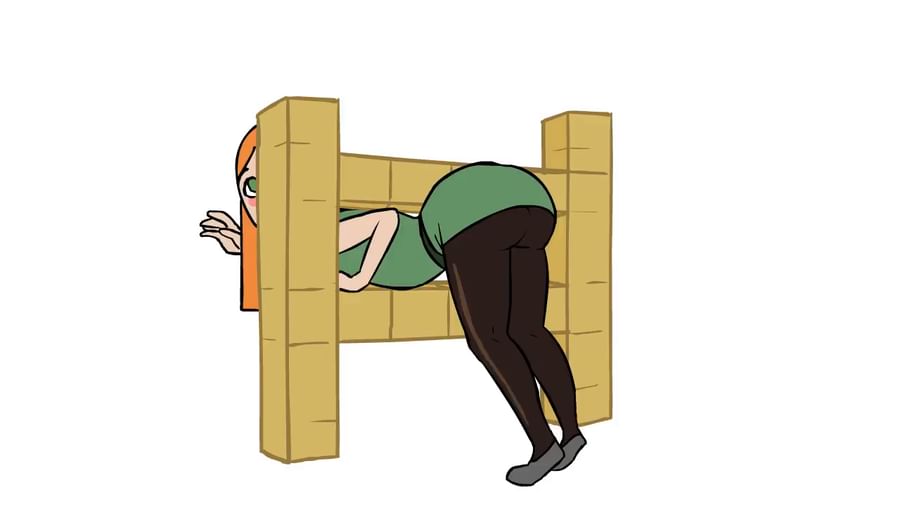 Everyone knows that 14 years is the heyday of "transitional age", "pubertal period", a hormonal surge. The pain of loss, the painful breakup of relationships, the inability to complete what was started - everything mixed up and somehow settled in Humbert's psyche. This is a vivid example of the formation of trauma and the lack of an "emotional shelter". It can be assumed with a high degree of probability that Humbert's later life unconsciously revolved around this inner circumstance.
Everyone knows that 14 years is the heyday of "transitional age", "pubertal period", a hormonal surge. The pain of loss, the painful breakup of relationships, the inability to complete what was started - everything mixed up and somehow settled in Humbert's psyche. This is a vivid example of the formation of trauma and the lack of an "emotional shelter". It can be assumed with a high degree of probability that Humbert's later life unconsciously revolved around this inner circumstance.
An equally plausible example from the literature can be the work of Gabriel Wittkop "Necrophilus", which, among other things, describes how the strongest childhood impression influenced the whole future life of the protagonist (one of the first experiences of knowing one's sexuality coincides with the moment of the death of his mother) .These are vivid but not exhaustive descriptions of traumatic experiences. Trauma can be rejection, observation of violence, frustration of needs and other situations that cause the most diverse palette of strong feelings that are excessive for the resources of the psyche - from fear to defenselessness. And, of course, trauma only in some cases forms the pathological development of the personality, in all others it only affects the development and makes itself felt in certain situations.
And, of course, trauma only in some cases forms the pathological development of the personality, in all others it only affects the development and makes itself felt in certain situations.
The world ceases to be safe, simple and understandable, the basic trust in the usual course of things disappears. Further life may be subject to new circumstances that have become entrenched in the psyche, and a person may feel that his life has split into “before” and “after”.
Even when major tragedies occur, such as a terrorist attack or a plane crash, many become unwittingly traumatized by the event.
The psyche failed, and there is nowhere to take your pain - there is no "emotional shelter". It all depends on the inner capabilities of a person: how painful the event turned out to be for him, and on what will happen next, whether there is someone nearby who can help and support.
So the idea that psychological trauma can be associated solely with violence is equivalent to the phrase "only an open fracture can be considered a fracture!"
Trauma tries to heal itself with all its might
Exactly like the bone tissue is trying to heal the fracture, but with any careless movement, the crack diverges again. If the damage is stronger than the crack, there is a high risk that the bone will not heal properly, and in order for it to grow back normally, you will have to break what is now.
If the damage is stronger than the crack, there is a high risk that the bone will not heal properly, and in order for it to grow back normally, you will have to break what is now.
The above examples of the works of Nabokov and Wittkop clearly demonstrate in what roundabout ways the upheavals and other painful circumstances of our childhood seek opportunities to live longer. We also know examples where a woman who has experienced sexual violence involuntarily begins to fall into circumstances in which violence can be repeated.
How to treat psychological trauma?
The most obvious answer from the question is psychotherapy. What has been asking for so long through the reproduction of a traumatic experience finds its life in language. The process of speaking makes something that lives inside us visible to another person - this process is called objectification. You can imagine it as a ball that appeared between me and the interlocutor, and we look at it together. Careful study, discussion, study of this material helps to loosen what has been in tension for so long. Of course, it is impossible to unsee what has been seen, but it is possible to make this something stop poisoning life.
Careful study, discussion, study of this material helps to loosen what has been in tension for so long. Of course, it is impossible to unsee what has been seen, but it is possible to make this something stop poisoning life.
The question arises: why is psychotherapy necessary? You can also talk to a friend.
Bringing his experiences to the therapist, it is much more likely that this person knows how to deal with this ball hanging in the air between him and the client. When the trauma comes to life in the language and becomes visible, there are two options for the development of events - either the trauma is healed, or a re-traumatization occurs - retraumatization. If you handle this ball carelessly, you can cause even more damage to your psyche. Therefore, it is better to measure the risks.
References
1. Robert Stolorow Trauma and Human Existence. 2. Otto Rank, Birth Trauma and Its Significance for Psychoanalysis. 3. Elisabeth Kübler-Ross, On Death and Dying.





